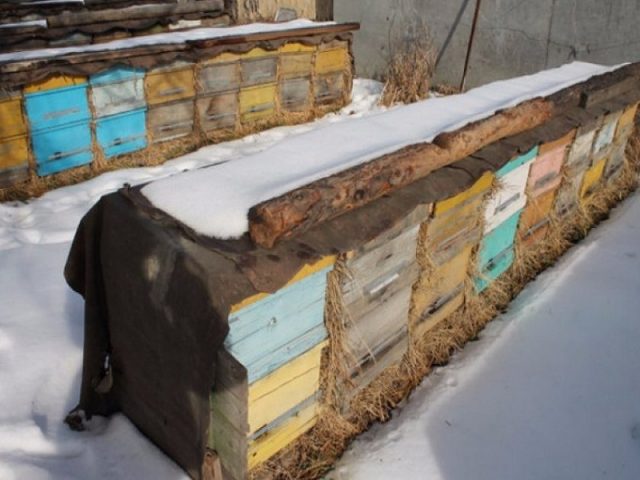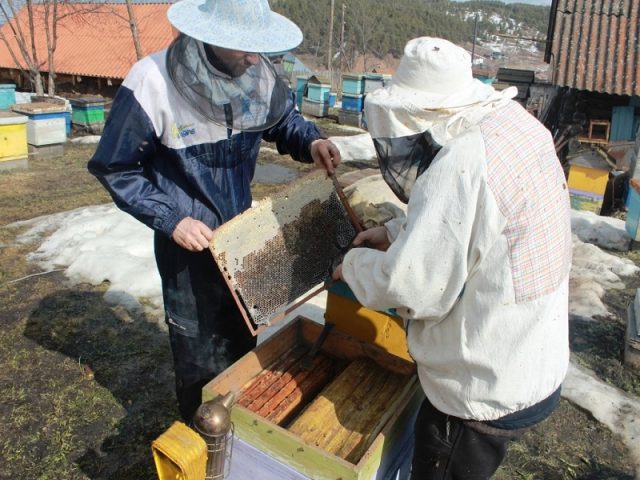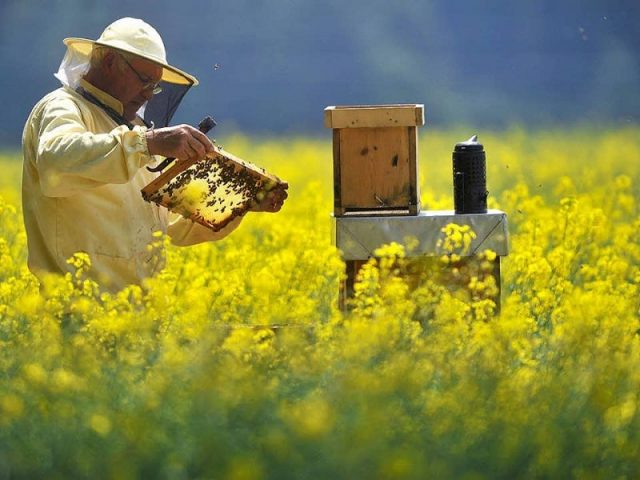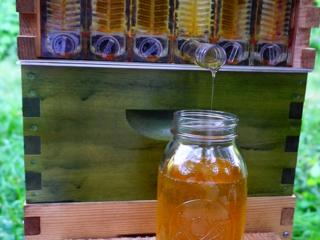Content
The work of a beekeeper is very painstaking. Work at the apiary continues throughout the year. Not only for young beekeepers, but also for those who have extensive experience, it is useful to have a beekeeper calendar, with monthly plans for the entire year 2024. It will be an excellent reminder not only of the necessary work, but also of the little things, without which it is impossible to achieve the planned volume of production.
Beekeeper's calendar for 2024
Every month in the apiary it is necessary to perform work typical for this period. The beekeeper's calendar for 2024 contains tips, recommendations, and reminders to avoid mistakes and highlight the most important aspects of apiary maintenance. Based on it, it is recommended to keep your own notes, which will help you further analyze the results and correct shortcomings. The records that a beekeeper makes over many years allow him to accumulate invaluable experience. The entire calendar for 2024 is divided into four seasons and their corresponding months. Each month assumes its own volume of necessary work for the beekeeper.
Work in the apiary in winter
According to the calendar for 2024, during this period there is not much concern with bee families. The work of a beekeeper in an apiary in December consists mainly of preparing for the next season: melting wax, buying foundation, necessary equipment, preparing frames, repairing hives or making new ones. Later, you should take care to speed up the melting of the snow in the apiary. If all requirements are met during preparation and the amount of food per bee colony is at least 18 kg, then wintering can be considered successful. To prevent the death of bee colonies (which often happens at the end of winter), you need to periodically listen to each family in January-February. An experienced beekeeper can determine its condition by the sound in the hive. An even, quiet hum indicates normal wintering, a strong one indicates dryness in the hive or insufficient food. Starving insects do not make a sound, and with a light blow to the house, a slight noise is heard, reminiscent of the rustling of dry leaves. To save the colonies, the beekeeper needs to feed with sugar syrup.
December
In accordance with the recommendations of the calendar for 2024, in December the beekeeper should carry out a number of activities:
- Provide ventilation conditions for hives.
- To scare rodents away from nests, drip 15 drops of mint onto the landing board.
- Renew the mixture of flour and alabaster to kill mice.
- Take care of frames, foundation and wire.
- Conduct an inventory of all property.
- Listen to bee colonies at least once.
January
In the middle of winter, snow cover may increase significantly and frosts may intensify. In the absence of extremely warm temperatures, the bee colony is in the club; there is no brood yet. Necessary events for January 2024 that should be carried out by the beekeeper according to the calendar:
- Constantly listen to the hives.
- Clear the entrances from snow.
- Continue the fight against rodents.
- Track the status of the club using a sheet of white paper removed through the tap hole.
- If necessary, fertilize.
Fertilizing in winter is done only as a last resort, if the frames are really empty. Warm syrup prepared by a beekeeper in a perforated bag or diluted honey can help solve this problem.
February
In the last winter month there are frequent frosts and snowstorms are possible. The days are getting longer, the sun is warming better. Insects sense changes and weather changes more strongly. The bee colony gradually wakes up, increases its food consumption and, therefore, it will need more oxygen. At this time, the beekeeping calendar for 2024 recommends:
- Listen to hives weekly.
- Check ventilation in houses.
- Clean the tapholes from dead debris.
- Continue the fight against rodents.
- At the end of the month, fertilize the candy.
In the second half of February 2024, to speed up the melting of snow, beekeepers sprinkle the snow near the hives with ash, earth or coal dust.
Spring work in the apiary
The purpose of spring beekeeping work is to prepare for the new season of 2024, assessing the strength of each family. In spring, the temperature in the hives rises significantly and the bees become more restless and noisy. They can behave this way even when there is a lack of fluid: in this case, beekeepers provide the insects with water. After the bees fly around, you need to conduct a full inspection of the bee colonies. It is better to do this in favorable weather. The subject of the examination is the condition of the bee colony, the availability of food, the quality of queens, seeding, and printed brood.At this stage, beekeepers can identify the causes of death of colonies, if any, and clean the hives of debris and dead bodies. If necessary, you need to substitute frames with honey or sugar syrup in the food. If there is mold in the hive, the beekeeper transplants the colony to another house prepared in advance, and cleans and burns the vacated one with a blowtorch.
March
In the first month of spring, temperature changes, thaws, and snowstorms are frequent. Life in the hives is activated, brood is laid. According to the beekeeper's calendar, in March 2024 it is necessary:
- Clear the front wall of the hive of snow.
- Review families, conduct an audit of them.
- Treat bees with medications when diseases are detected.
- Place frames with food after opening the honeycombs and sprinkling them with warm water.
- Remove the remaining snow from the apiary.
- Wax additional frames to expand the nests.
April
The weather is unstable, the air temperature is above zero during the day, and frosts occur at night. Families fly around, new bees appear, the first bribe begins with primroses and trees. In beekeeping, the spring events of the April 2024 calendar come down to the following events:
- Treat against ticks.
- Disinfect equipment and beehives.
- If necessary, transfer the bee colony to another house.
- Fertilize.
- Install drinking bowls.
May
During this period, it becomes warm, gardens bloom en masse, and bribes begin. Beekeepers increase the power of bee colonies. Insects actively pull back the wax and collect pollen and nectar. The beekeeper's calendar for May 2024 advises:
- Remove unnecessary frames.
- If there is a threat of frost, insulate the family.
- Treat against moths, nosematosis and acarapidosis.
- Provide anti-swarming measures.
Watching bees and working in the apiary in summer
In June, bee colonies grow rapidly and swarm. In the summer, bee monitoring is to ensure that the queen has a place to lay eggs and that the bees have the opportunity to build honeycombs and collect honey. The beekeeper should cull queens if the colony is lagging behind in development or weakened. It is necessary to pump out the honey and install an additional housing (magazine). With the help of printed brood, it is necessary to strengthen the layering of families.
If there is a good honey harvest, then the beekeeper needs to put honey-filled and sealed frames in reserve, and add cases and magazines in a timely manner. Pump out only fully mature honey, when more than 50% of the frame is sealed. In the summer, a beekeeper should not miss the moment of reducing the bribe, periodically inspect the hives, pump out honey, remove stores and prevent the theft of bees. It is also necessary to remember about the treatment of varroatosis.
June
Summer time is the most active period of apiary functioning. Honey plants begin to bloom, swarm, and expand families. Main actions for beekeepers in June 2024, according to the calendar:
- Take the hives to honey collection.
- Use different methods to interrupt swarming.
- Treat against mites with herbal preparations so as not to harm the quality of honey.
- Place magazines on the hives.
Work in the apiary in July
In mid-summer, mass flowering of honey crops is observed. Peak bribe is a busy time. The beekeeper's calendar for July 2024 recommends:
- Prepare spare frames.
- Install an additional housing on the hive to stimulate the colony to collect honey.
- Open the entrances as much as possible for bees.
- Remove sealed, “ready” frames in a timely manner, replacing empty ones.
- Replace queens with young ones to improve subsequent wintering and avoid swarming.
August
In the last month of summer, night air temperatures decrease. The main honey plants have already bloomed. The number of bees is gradually decreasing, the bee colony is preparing for winter. According to the calendar, the beekeeper’s work in the apiary after the main bribe in August 2024 includes:
- Pumping out honey and drying honeycombs.
- Equipping the nest.
- Conducting autumn fertilizing.
- Rejection of low-quality frames and honeycombs.
- Measures to prevent theft.
- If necessary, uniting weak families.
The main work with the bees after pumping out the honey is to prepare for a successful winter in 2024 and lay the foundation for the next season's harvest.
Work in the apiary in the autumn
Despite the presence of a supporting bribe in the first weeks of autumn, the season ends for beekeepers. The main task at this time, according to the 2024 calendar, includes preparation for wintering. For this purpose, the beekeeper checks the brood, food supplies, and reduces colonies. It is necessary to consider protecting the hives from rodents and reducing the entrances to preserve heat and prevent theft.
September
The average daily temperature is set at 10 ⁰C. Night frosts occur. Sometimes the warmth returns for a short time. Young bees are born and will survive until spring. Before a long winter, they need a flight to cleanse the intestines. As soon as the temperature drops below 7⁰ C, the bees gather in a club. The beekeeper's calendar for September 2024 includes the following activities in the apiary:
- Treatment with chemicals against varroatosis.
- Cleaning and disinfection of empty hives.
- Cleaning sushi.
- Collection of propolis.
- Bookmark for winter storage of frames with beebread and honey.
- Processing of wax raw materials.
October
In mid-autumn it gradually gets colder, cloudy weather and rains become frequent. At the end of the month, snow may fall and the soil may begin to freeze. The bees are in the club. But if the temperature rises, it breaks up, and then they fly around. The later this happens, the more reliable the wintering. According to the beekeeper's calendar, in October 2024 there will be:
- Complete the storage of frames, magazines and cases.
- Exterminate mice in the winter hut.
November
Temperatures drop below zero, with frosts becoming stable at the end of the month. It's snowing. The beekeeper's calendar for 2024 in December suggests:
- Drying the winter hut and checking its ventilation.
- Transfer of hives to the winter hut.
- If the houses remain on the street, then they should be insulated and covered with snow on three sides.
- Monitor the behavior of bee colonies after wintering.
Beekeeper's calendar using the Cebro method
The Vladimir Tsebro method is characterized by:
- tripling the number of bee colonies by the time of the main bribe;
- annual renewal of queens;
- uniting three families into one strong one for wintering;
- use of three-body hives.
According to the Cebro calendar:
- In January, the beekeeper observes and listens to the behavior of the bee colony, removes dead wood, and insulates the hives.
- In February, you need to conduct a laboratory test for insect diseases.
- In March - carry out feeding and treatment.
- In April - remove all dead water, install drinking bowls and feeders. During this period, the beekeeper can unite families if the queen dies.
- In May - form layering, plant young queens.
- In June, beekeepers change queens and brood and attach layering.
From July to December, the beekeeper engages in normal activities. In August, according to the Tsebro calendar, during preparation for wintering, it is worth uniting families, reducing their number by three.
Conclusion
The beekeeper's calendar for 2024 is a guide to action and help for beginners. Over the years, experience will accumulate, beekeeping itself will turn into an exciting activity, and professionalism will grow. This is only possible if you follow the basic postulates and rules in combination with your own experiences and secrets, which should be recorded in the beekeeper’s calendar for 2024 and subsequent years.














